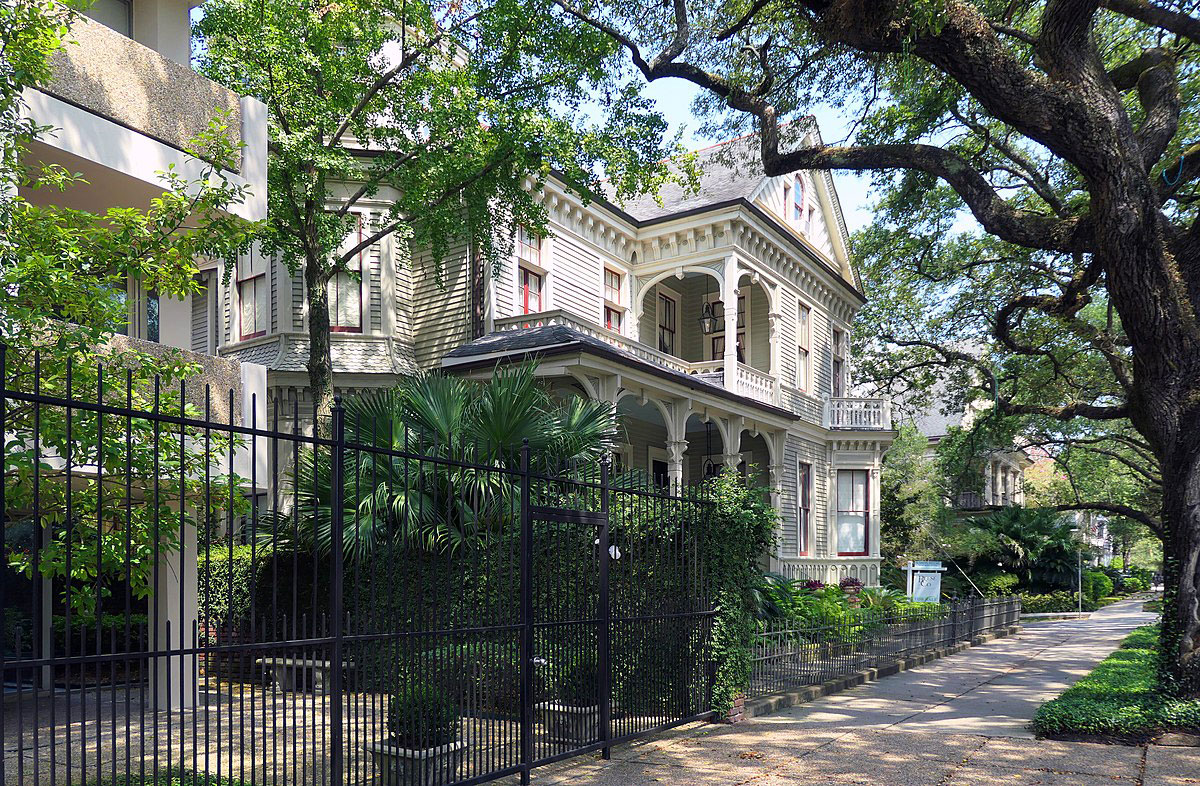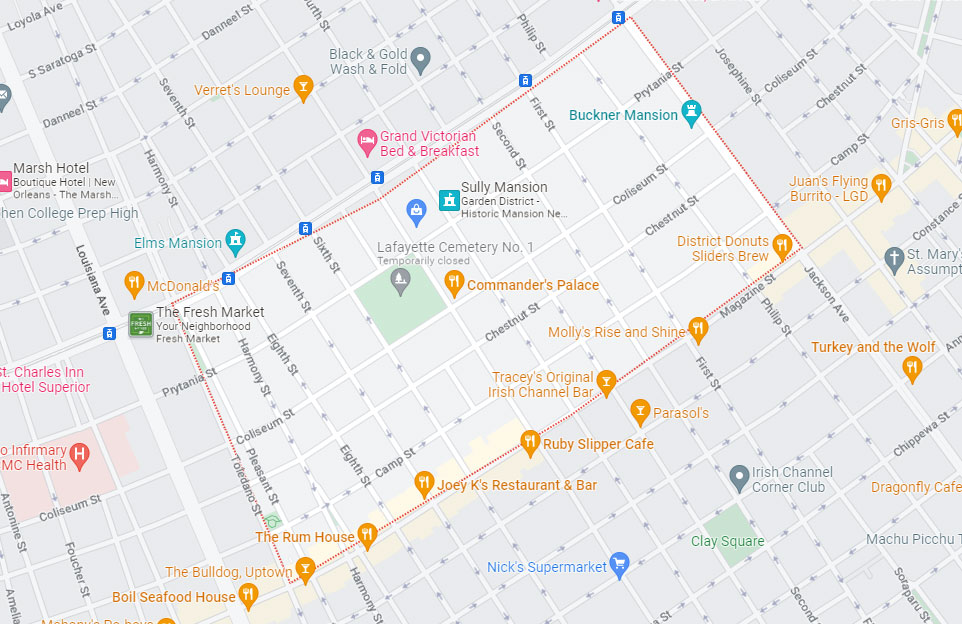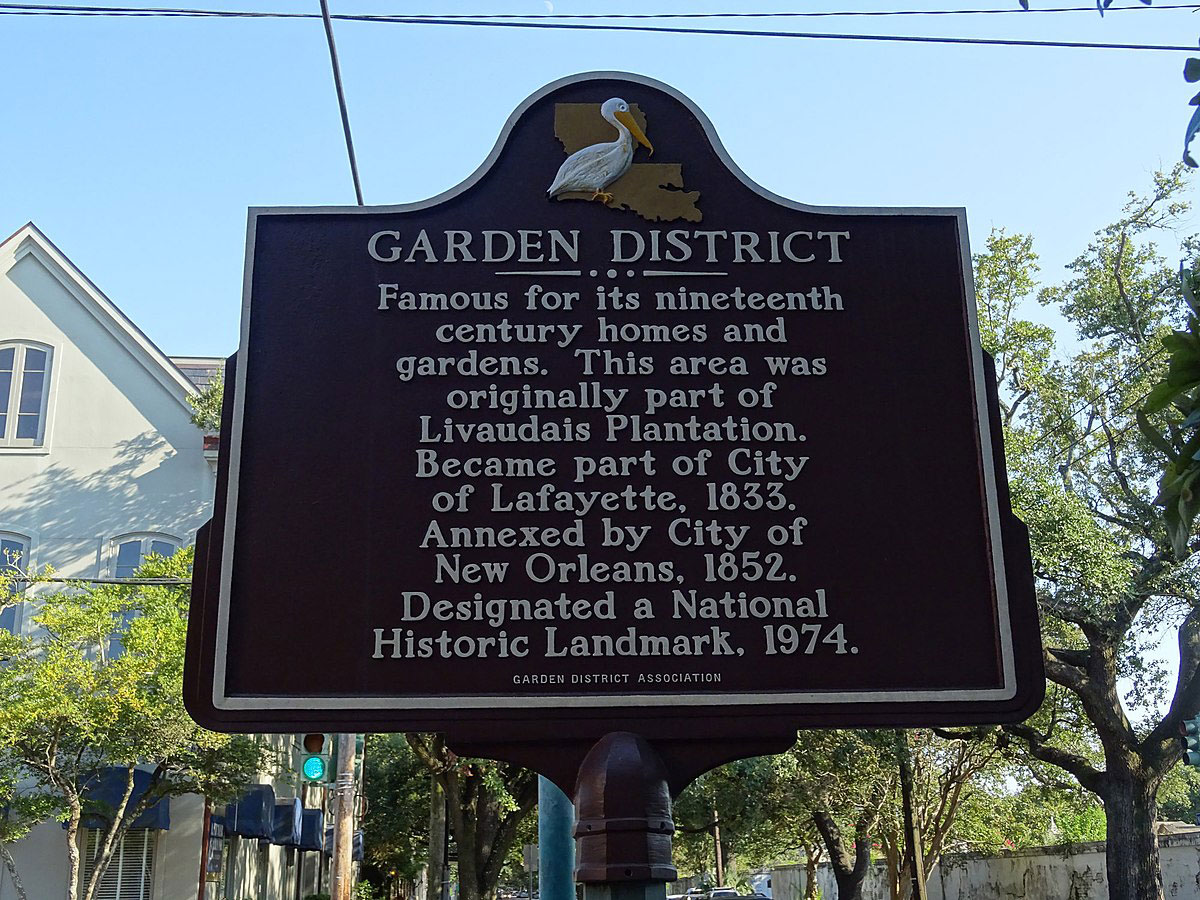Garden District Homes for Sale
This picturesque neighborhood of enchanting mansions is the darling of Hollywood South, and is also a thriving shopping and dining destination.
Originally created after the Louisiana Purchase to house wealthy American arrivals, the Garden District has retained its magnificent architecture in Italianate, Greek Revival, and Victorian styles. The quiet, leafy residential area is peppered with historic homes and pristine gardens, fine-dining destinations, casual eateries, landmarks, and several blocks of retail heaven on Magazine Street. The stunning Garden District is a popular tourist destination for numerous reasons. It’s easily walkable and accessible from other parts of the city, primarily thanks to the streetcar running along St. Charles Avenue. Expect to pay, on average, $375 per square foot.


Where Is the Garden District?
The Garden District is a sub-district of District 2, Central City/Garden District. According to the U.S. Census Bureau, it has a total area of 250 acres.
The Garden District’s boundaries, as defined by the City Planning Commission, are:
- North: Charles Avenue
- East: First Street
- West: Toledano Street
- South: Magazine Street

Homes for Sale in Garden District, New Orleans
Why Buy a Home in Garden District?
It’s safe to say that the Garden District is one of the most stunning neighborhoods in the United States. The lavish gardens seem to be in bloom all year round, and the streets are lined with majestic oaks. From the grand mansions to the well-preserved single-story cottages, the area’s architecture is historically distinctive. Below are more of the things we love about the Garden District.
Italianate, Victorian, and Greek Revival Architecture. The area was laid out in 1806 by the notable Creole city planner Barthelemy Lafon and was designed as an urban open system. Many of the original mid-19th century buildings remain in great condition.
Hollywood South Loves to Film and Stay Here. Over the years, countless movies and TV series have been filmed in the area, including American Horror Story: Coven, The Curious Case of Benjamin Button, Interview with a Vampire, and many more. Quite a few celebrities have also stayed in the area or have bought homes there, including Anne Rice, Nicholas Cage, John Goodman, Sandra Bullock, and Beyonce and Jay Z.
It’s Easy to Get to, and to Navigate. The area’s walk score is a high 88, and its bike score is 66. The St. Charles streetcar will take you to Carrollton and the Riverbend and through the CBD to Canal Street (with the French Quarter just across the street). Magazine Street is highly walkable, and, barring Carnival madness, street parking is plentiful.
Commercial Hubs of St. Charles Avenue and Magazine Street provide a plethora of eating and shopping destinations. Magazine Street’s many restaurants, art galleries, vintage boutiques, and casual bars (most with outdoor seating) stretch for blocks. Busy St. Charles Avenue is probably one of the most beautiful streets in the country, lined with oak trees and the grand mansions block after block.
Garden
District
Attractions
Shop for a costume or a vintage treasure at Funky Monkey or the Magazine Antique Mall on Magazine Street.
Tour the above-ground Lafayette Cemetery No. 1 on Washington Avenue. Small and crumbling, it’s classical old-school New Orleans.
Learn about firefighting in New Orleans at the New Orleans Fire Department Museum and Education Center on Washington Avenue.


Attend an author event at the Garden District Bookshop on Prytania, the treasure trove of Louisiana-specific books.
Enjoy the decadent prix fixe lunch with 25-cent martinis at Commander’s Palace, the grand dame of high-end Creole dining.

History of Garden District, New Orleans
Beauty meets tradition at the Garden District, where many historic homes bear the names of the families that built them more than a century ago. It was those first residents who founded the first Mardi Gras krewes in New Orleans, such as Rex. Their successors still count themselves among Mardi Gras royalty and remain active members of some of the oldest existing krewes (you can tell by the flags hung outside the houses during the Carnival).
Like many other parts of New Orleans, what is now the Garden District was once the site of several plantations, most famously, the Livaudais Plantation. It was eventually sold to wealthy Americans who didn’t usually inhabit the traditionally Creole parts of the city such as the French Quarter and Treme and preferred the “American sector” on the other side of Canal Street. The area became part of the city of Lafayette in 1833, and was annexed to New Orleans in 1852.
Developed by the Creole city planner and architect Barthelemy Lafon, the area contained streets with only a few houses on each block, with plenty of room for a garden for each house (hence the district’s name). Although many smaller houses were added later, including “gingerbread” Victorian homes, and the expansive gardens were subdivided into housing lots, quite a few stately mansions from the early 19th century still dominate some blocks in the area. The Garden District continues to thrive and attract millions of visitors annually thanks to its spectacular architecture and numerous options for shopping and dining.
